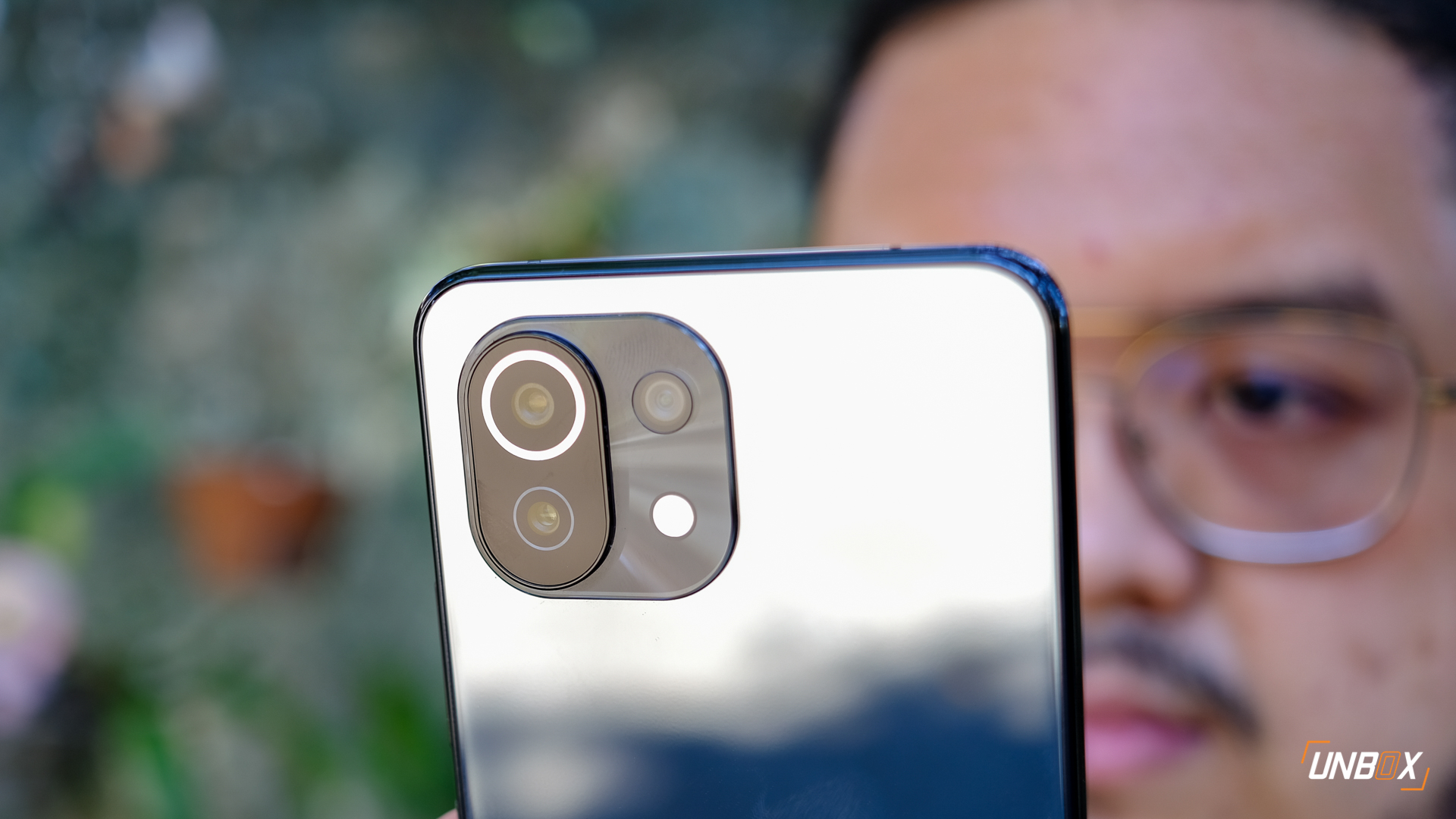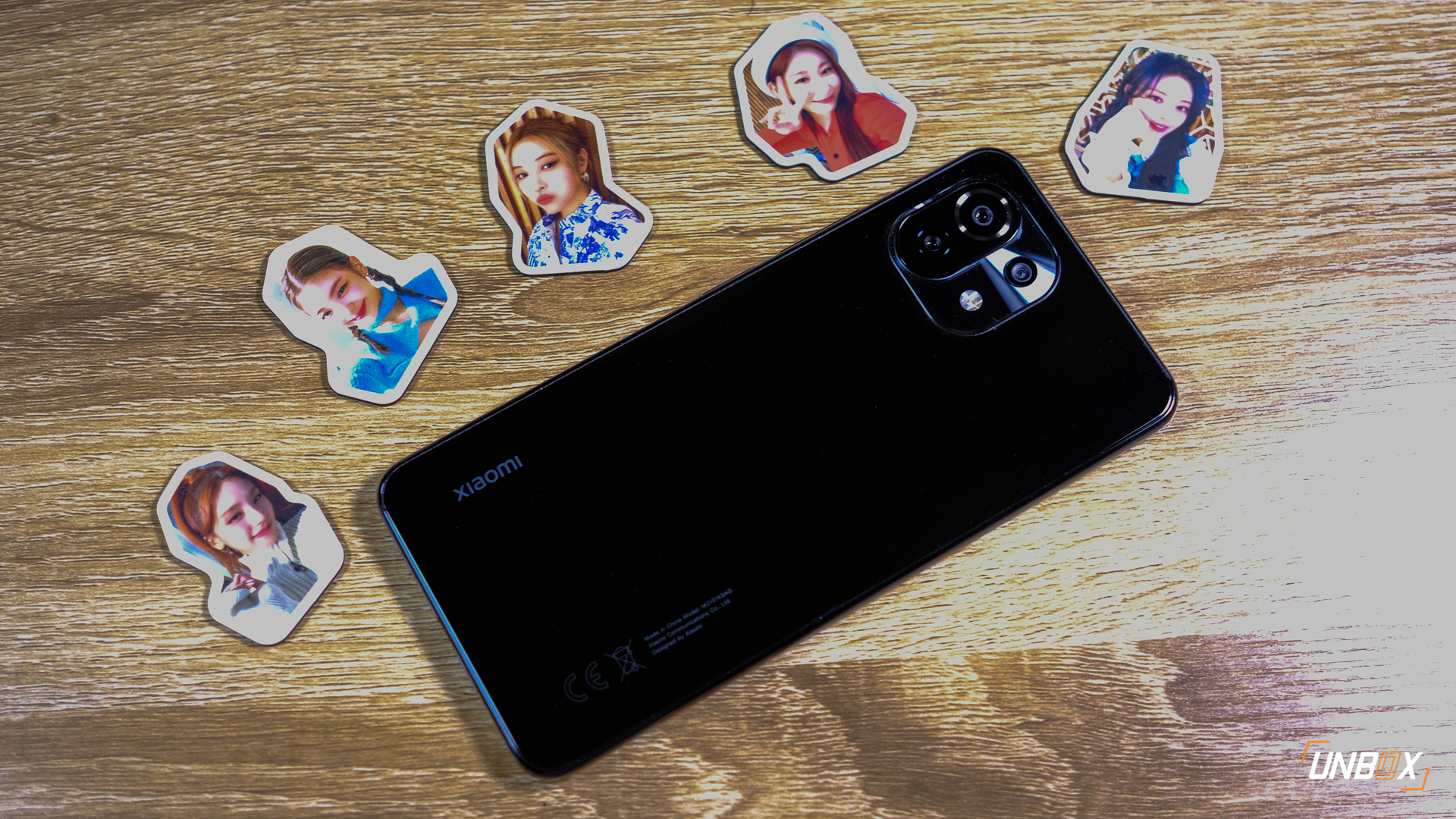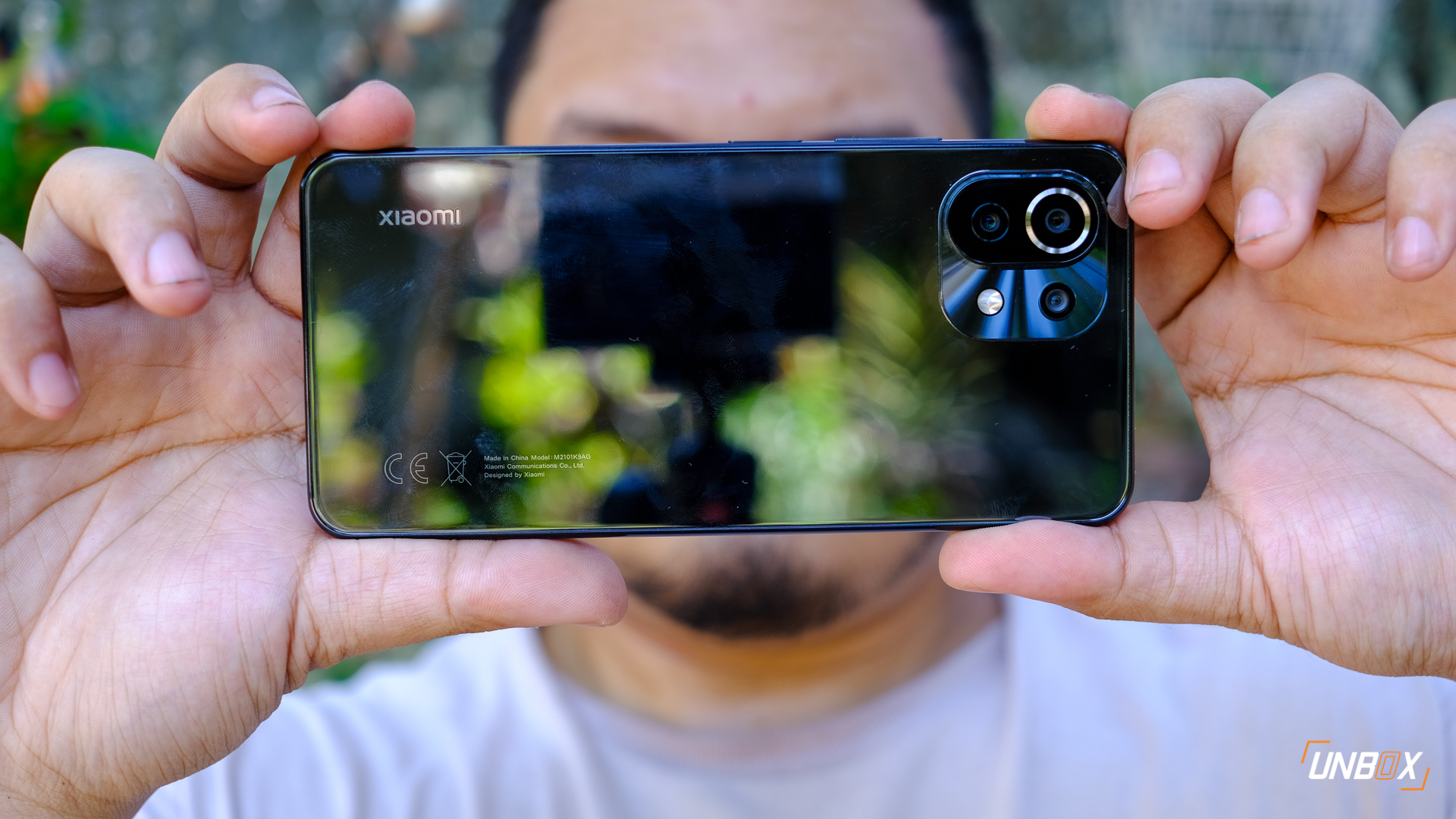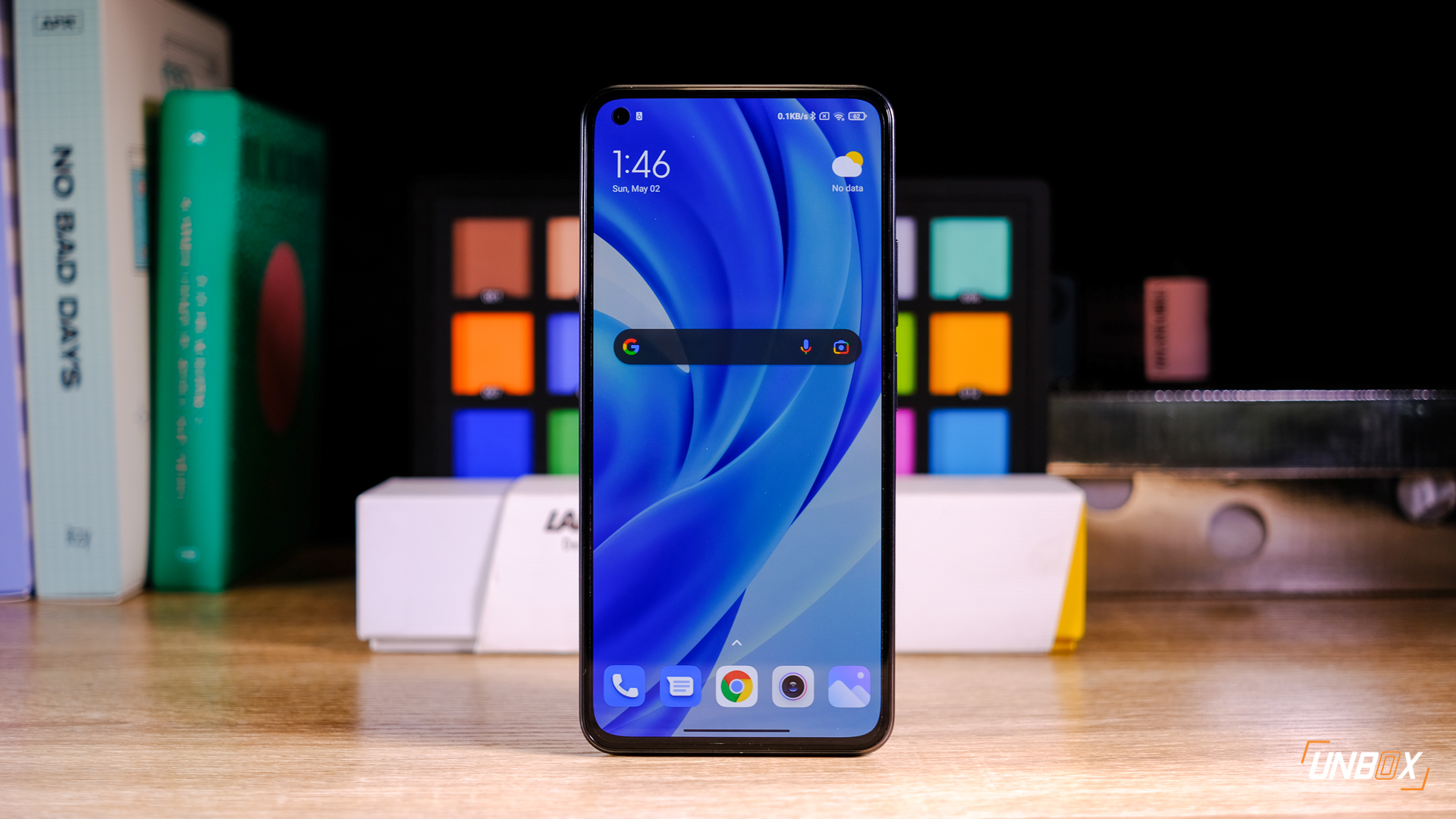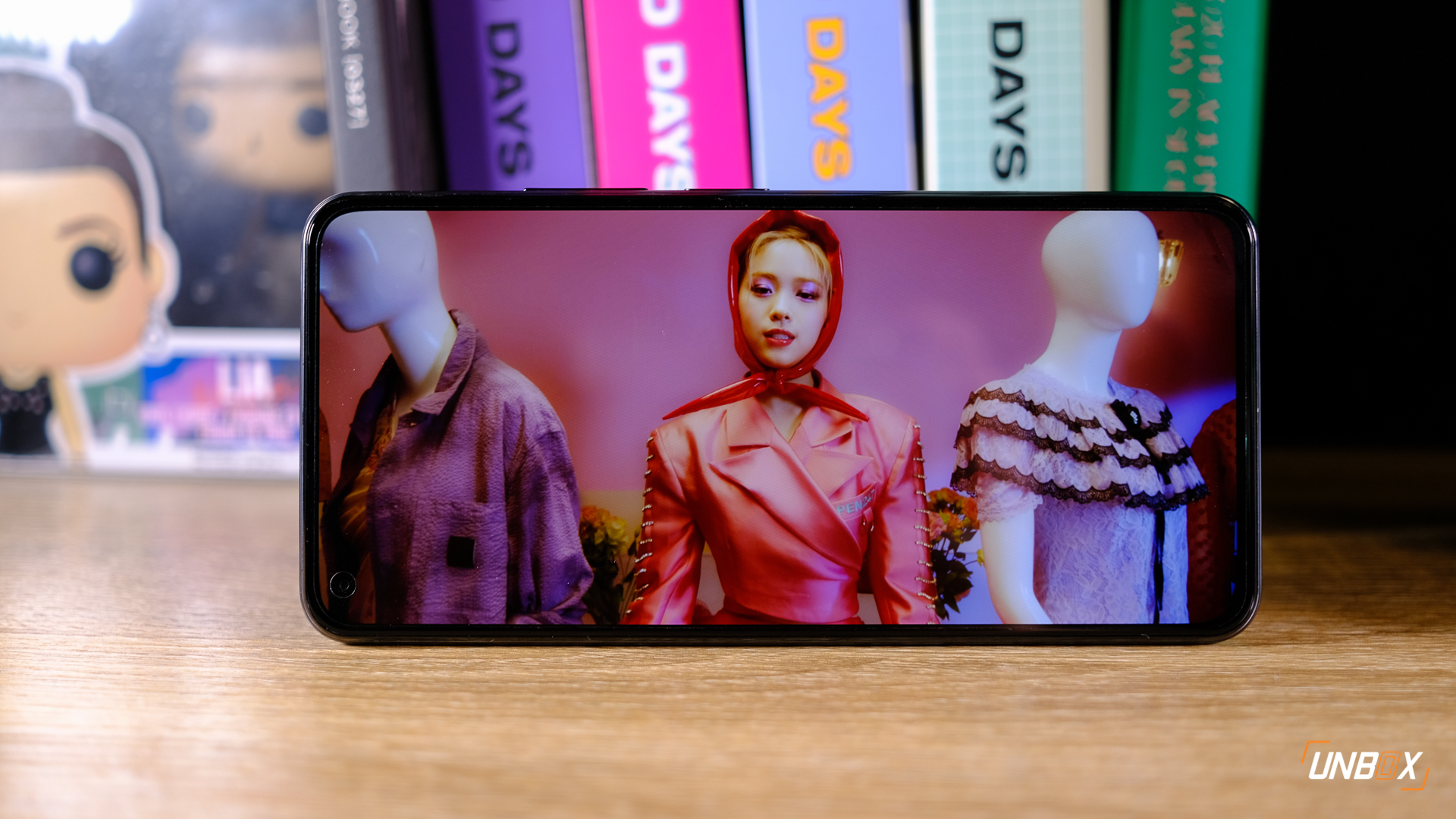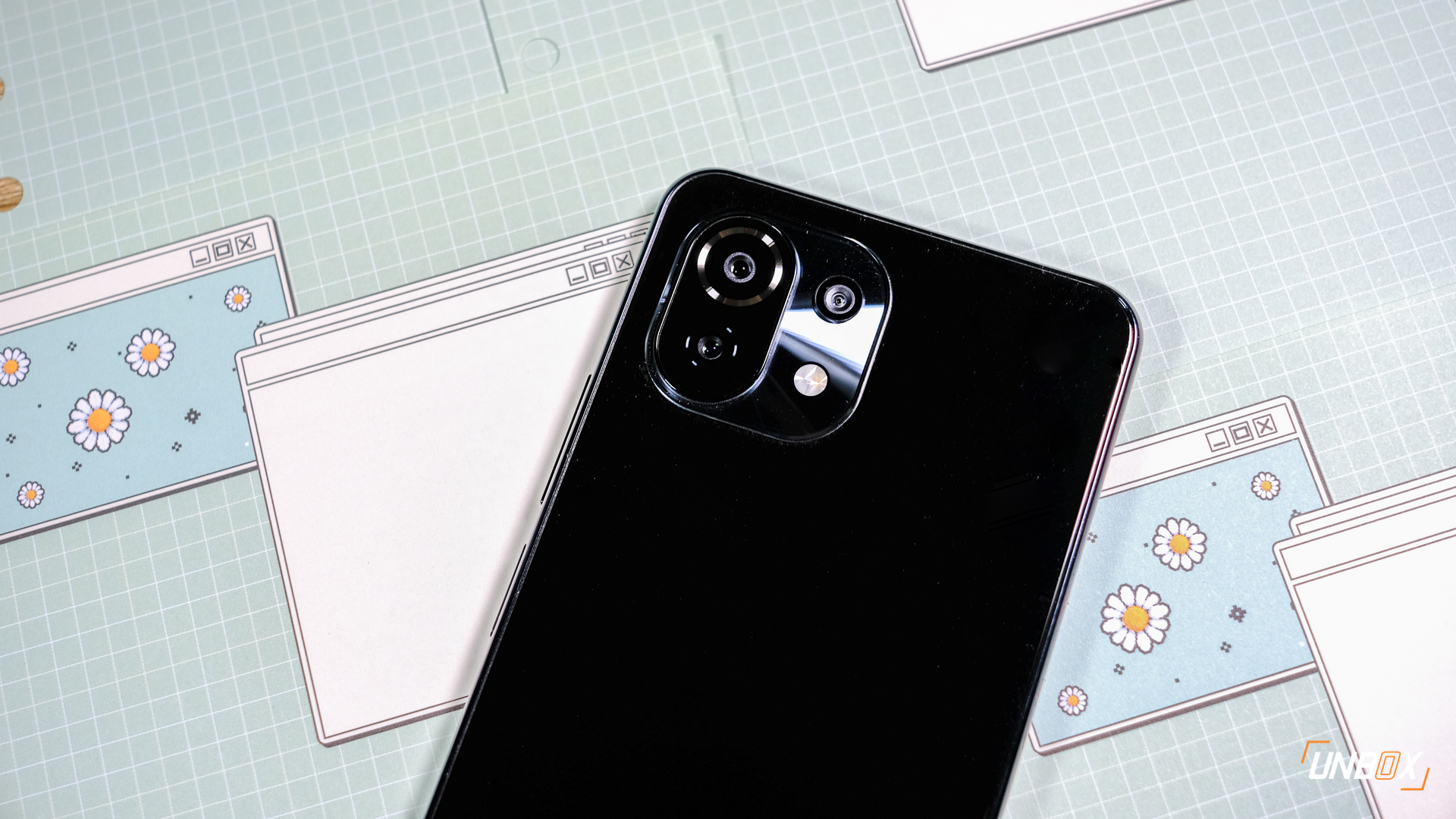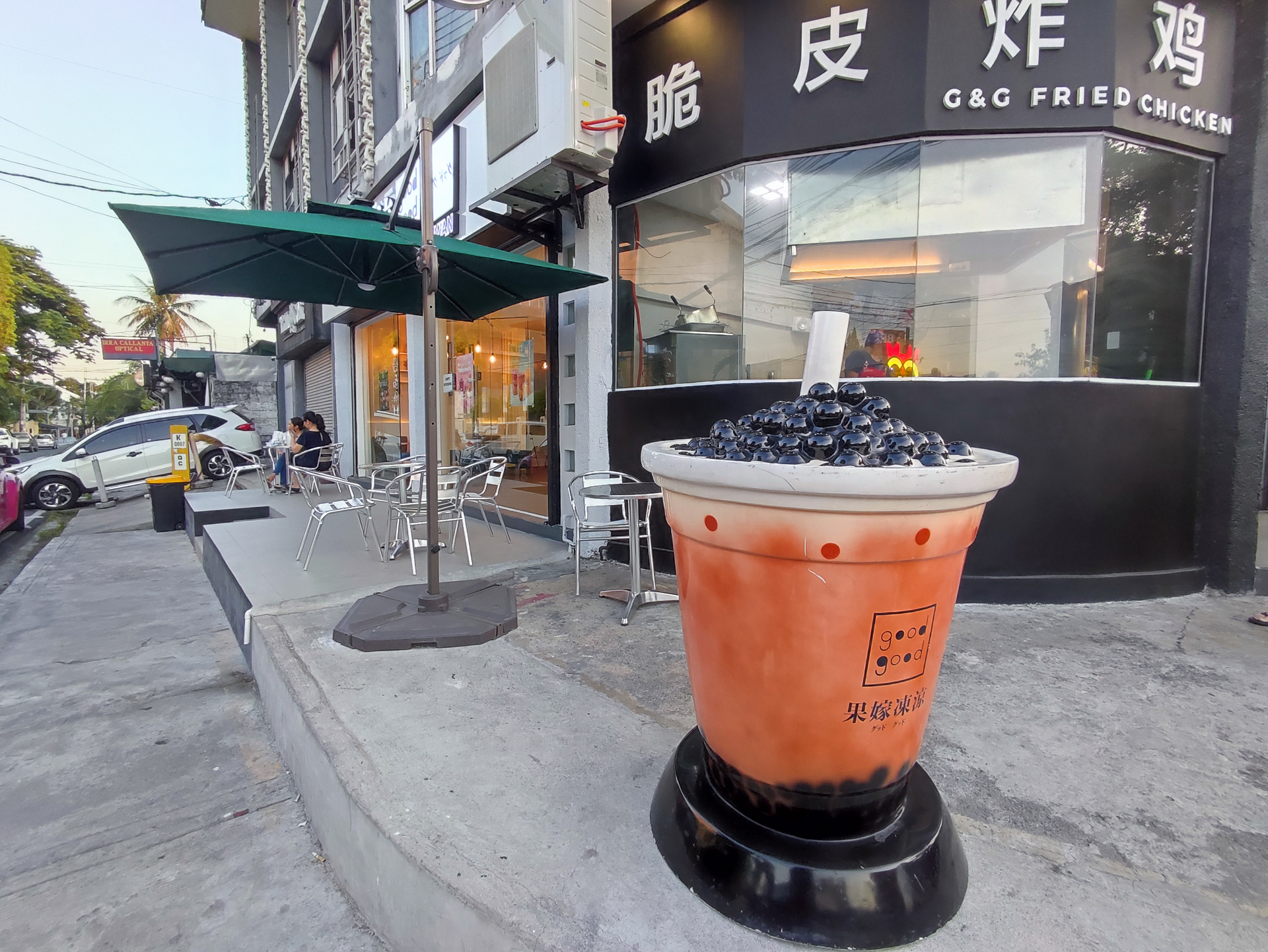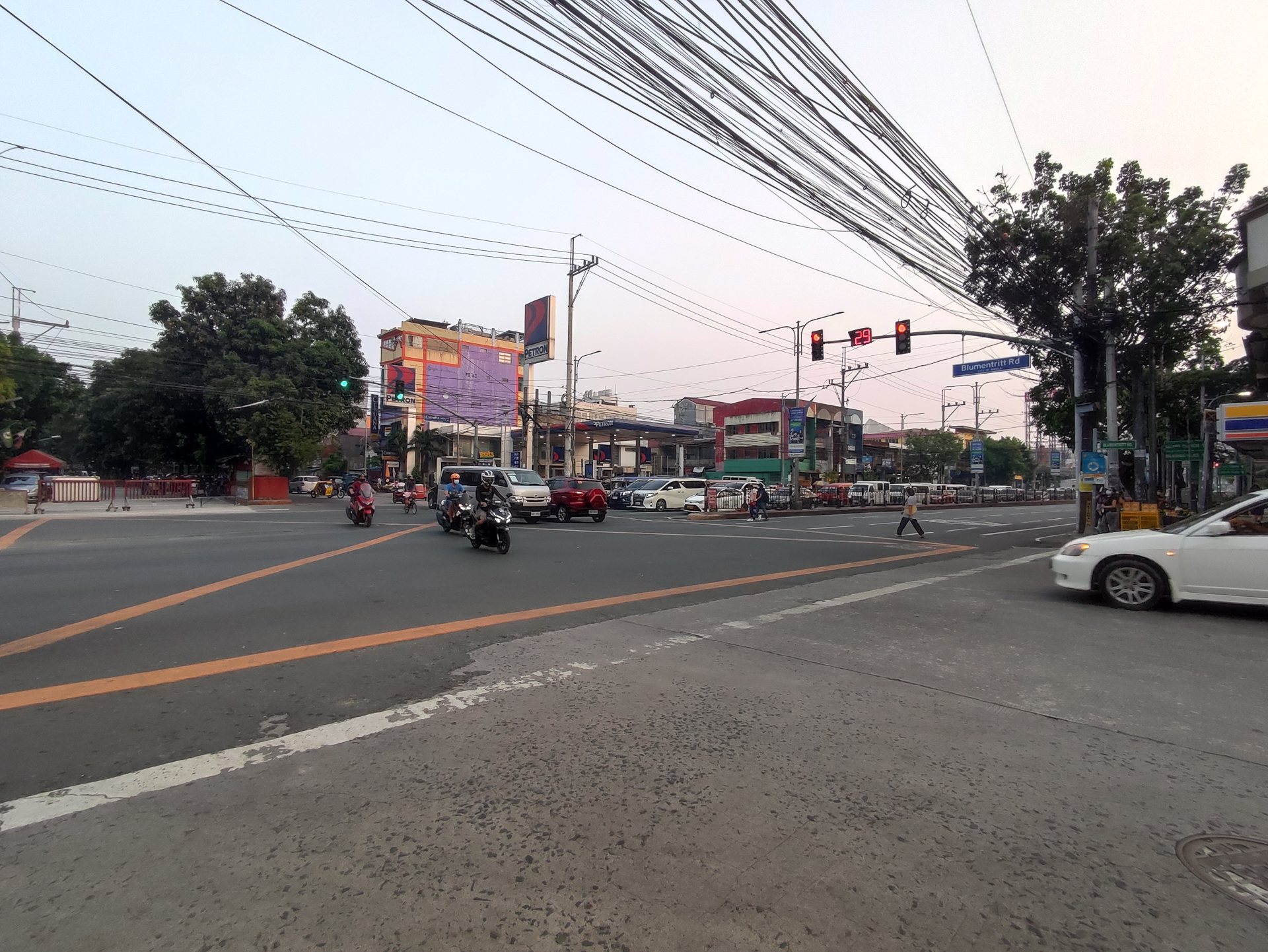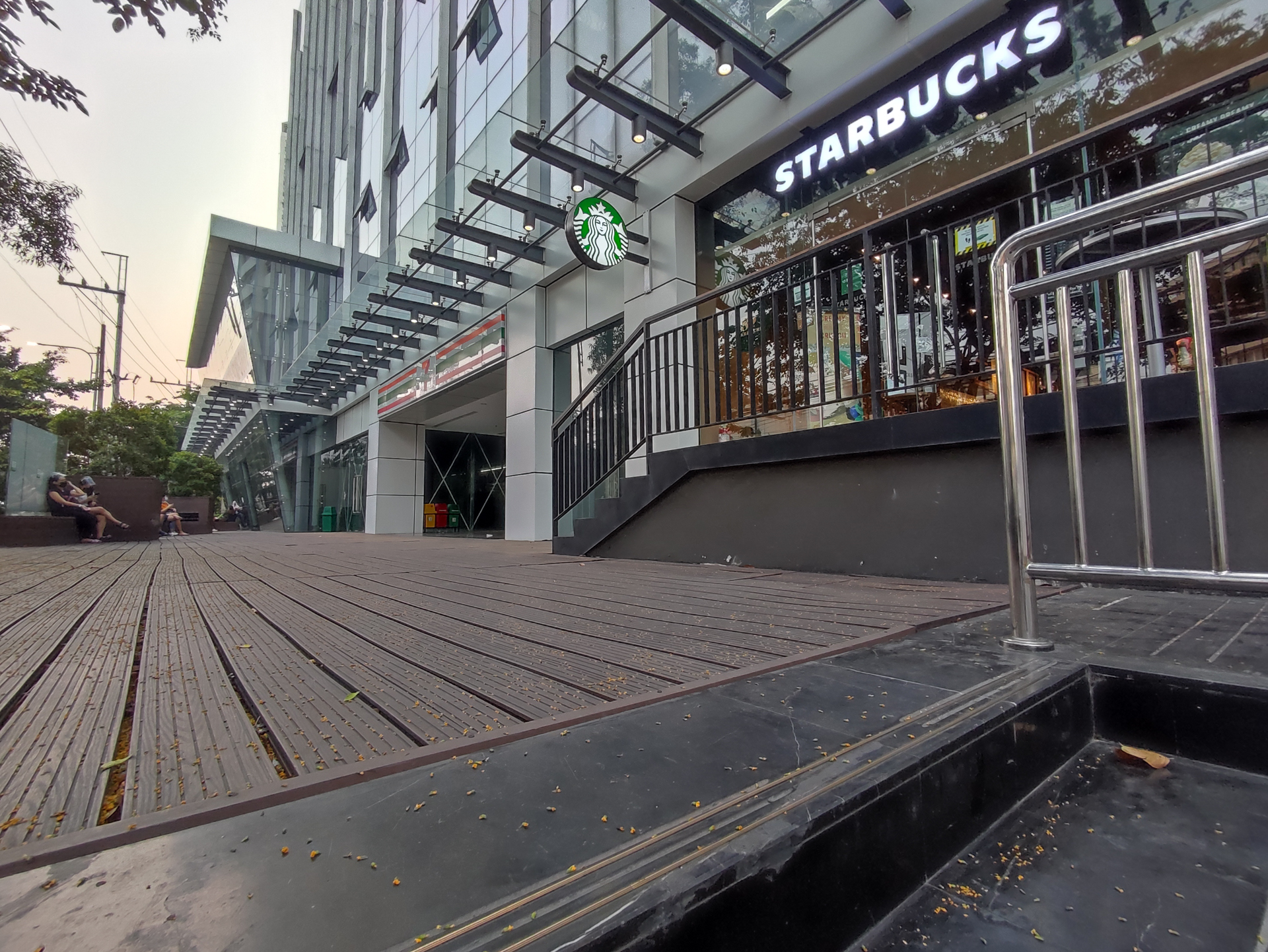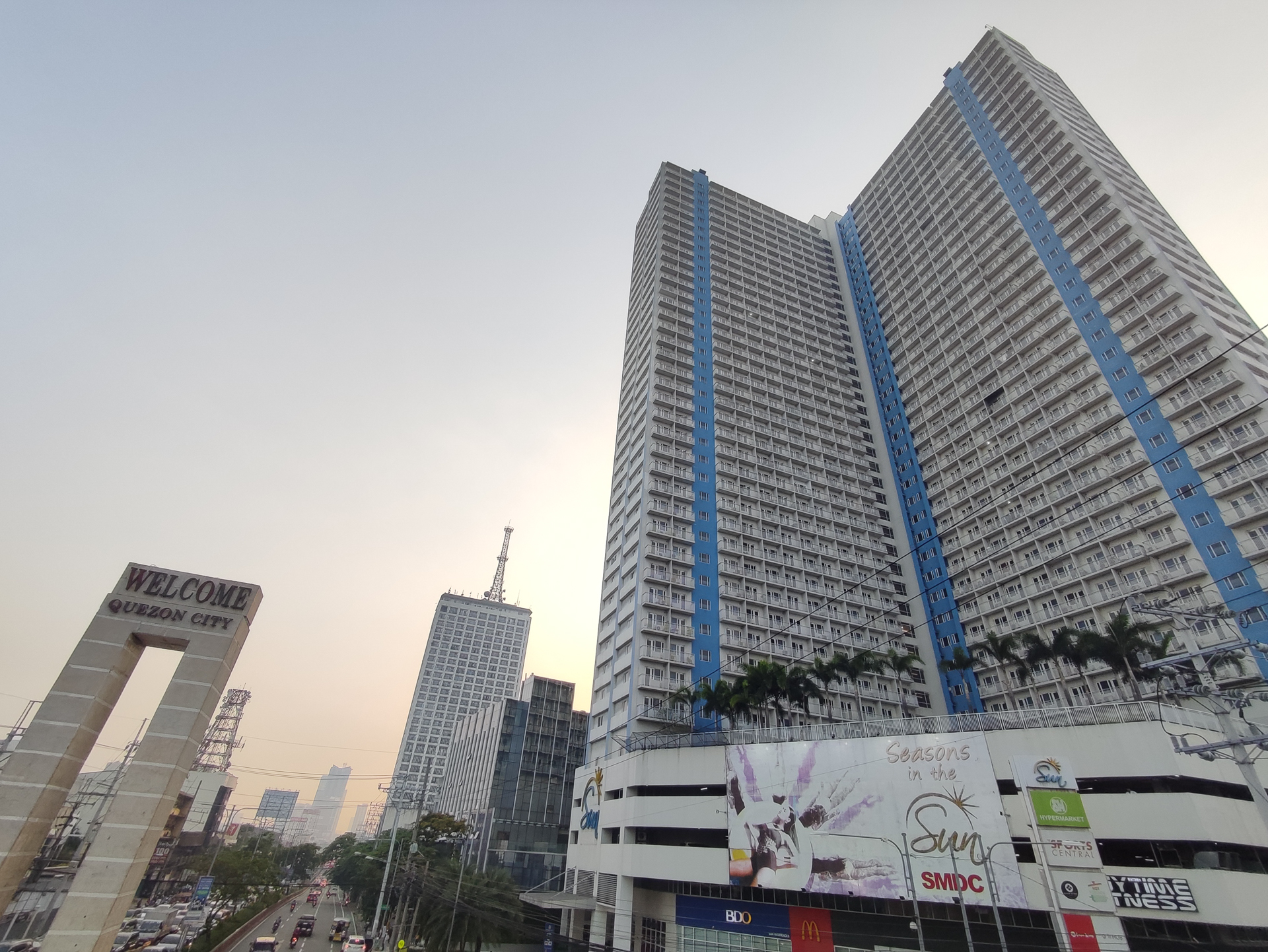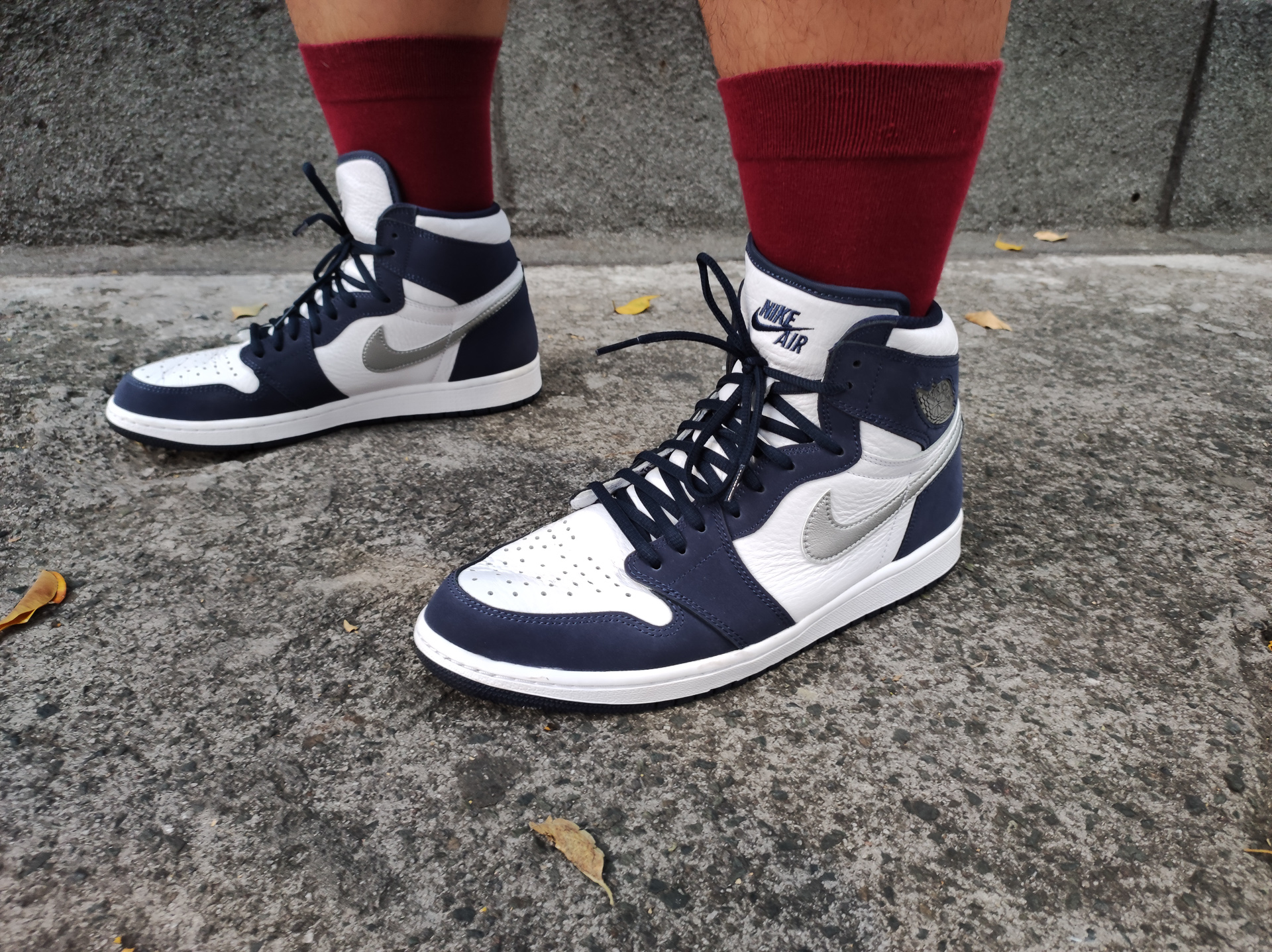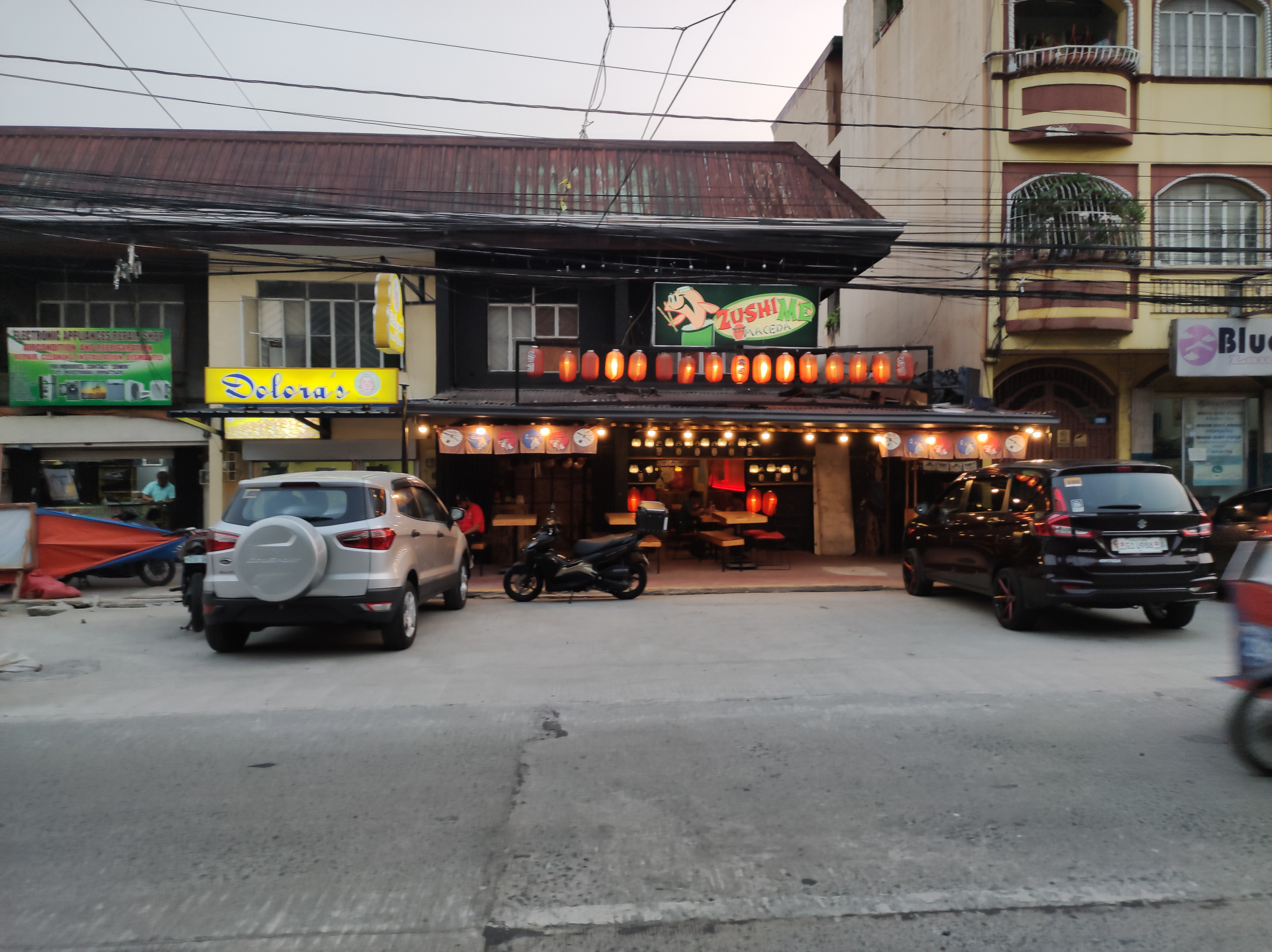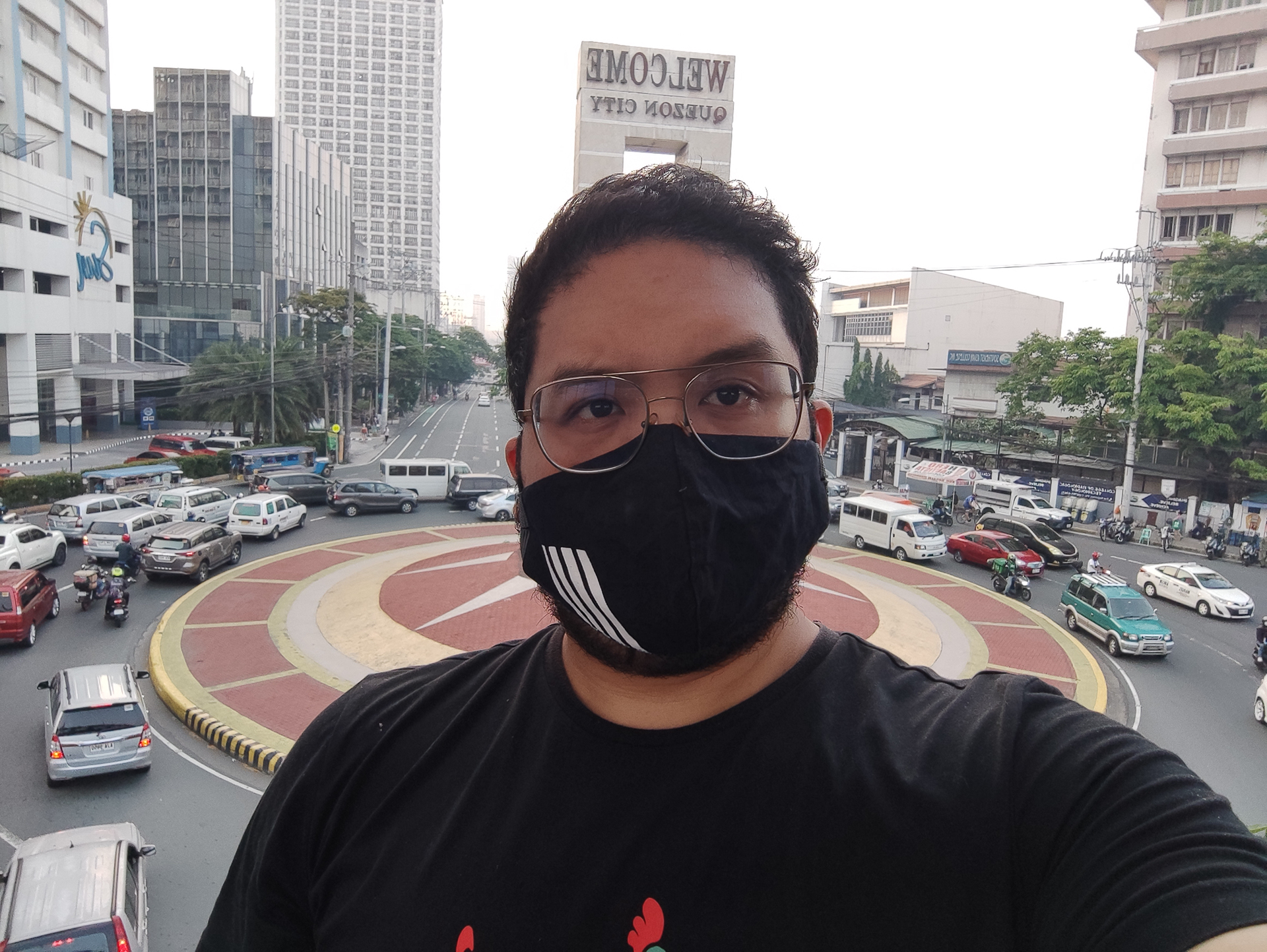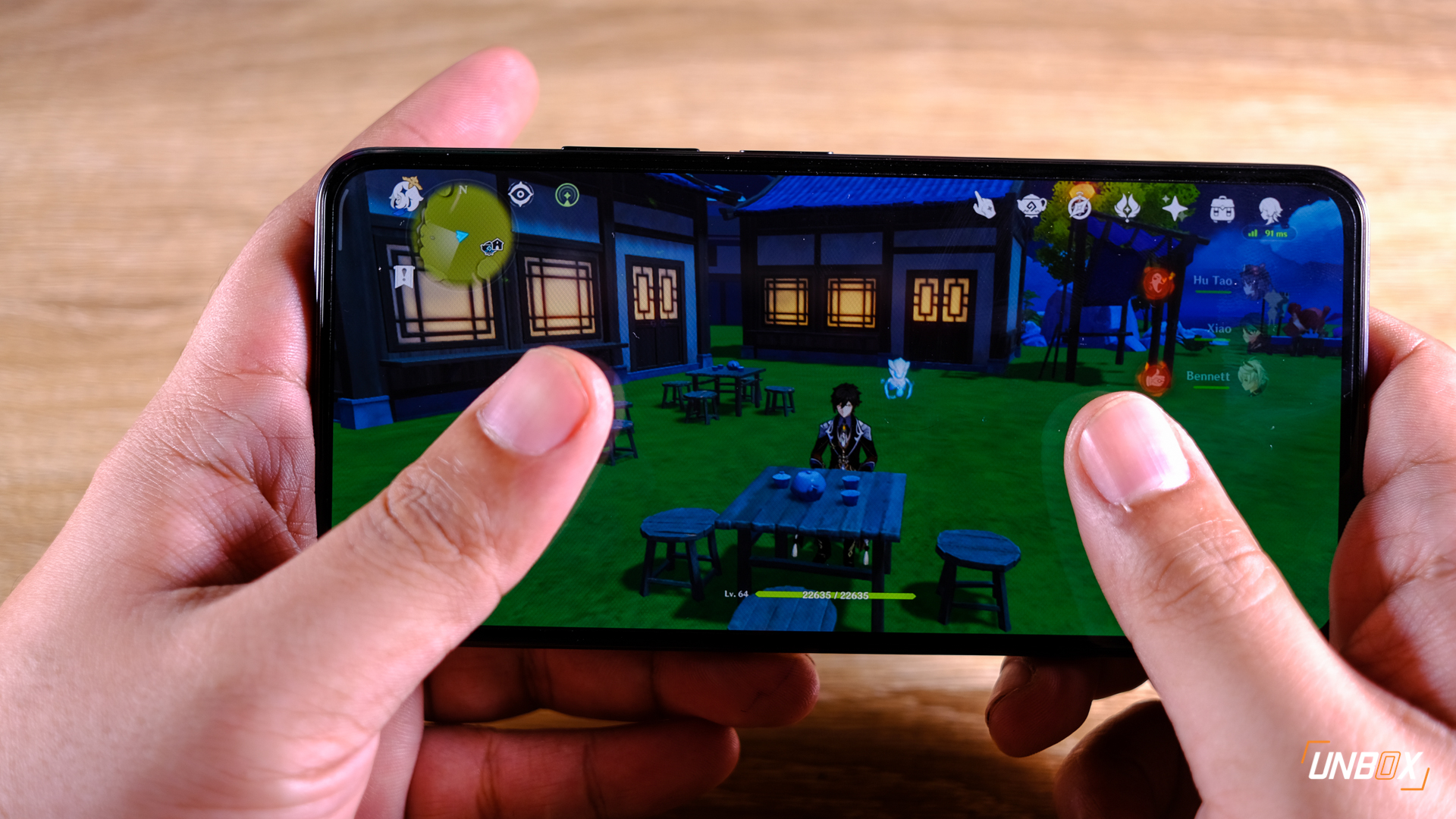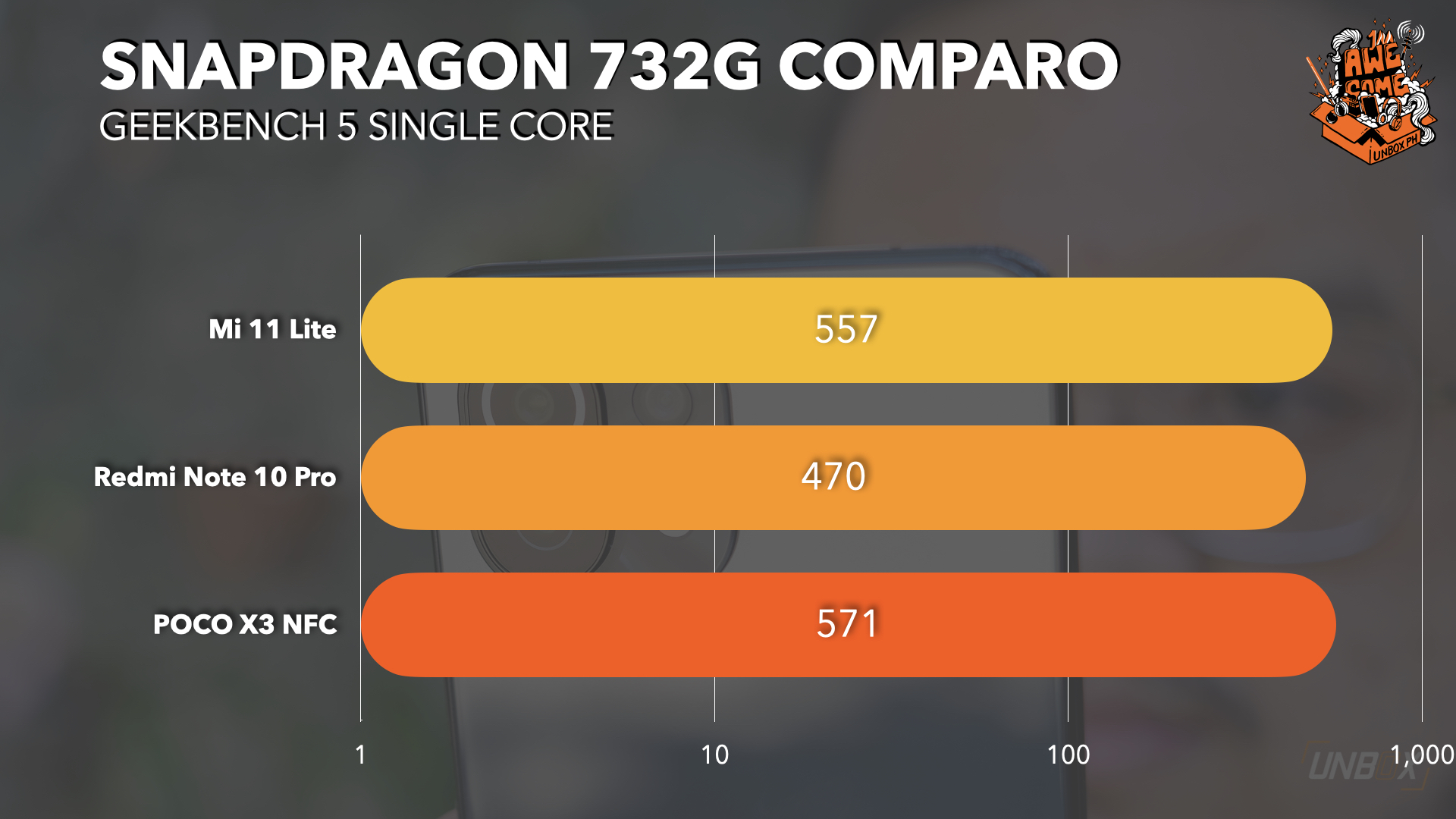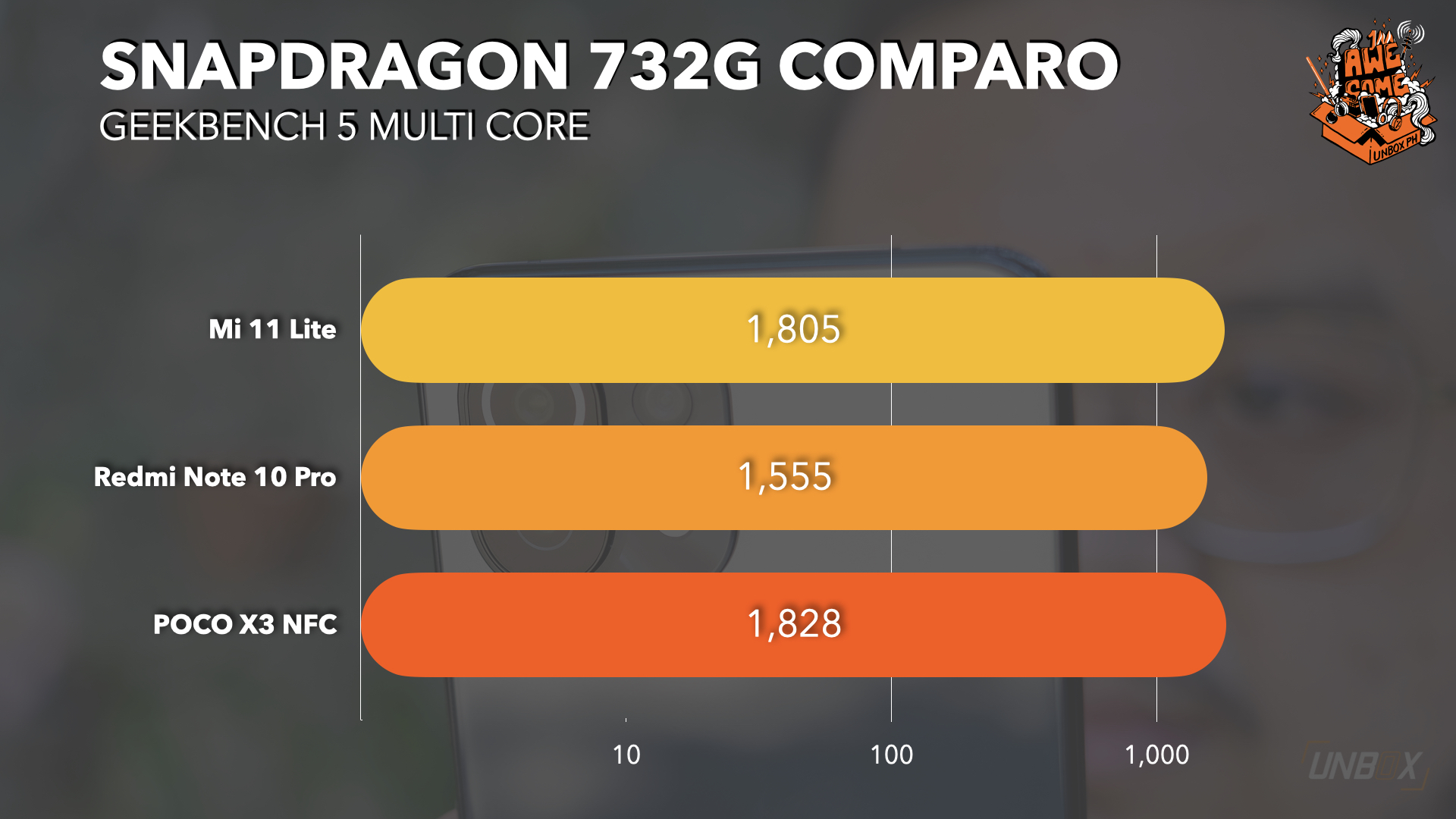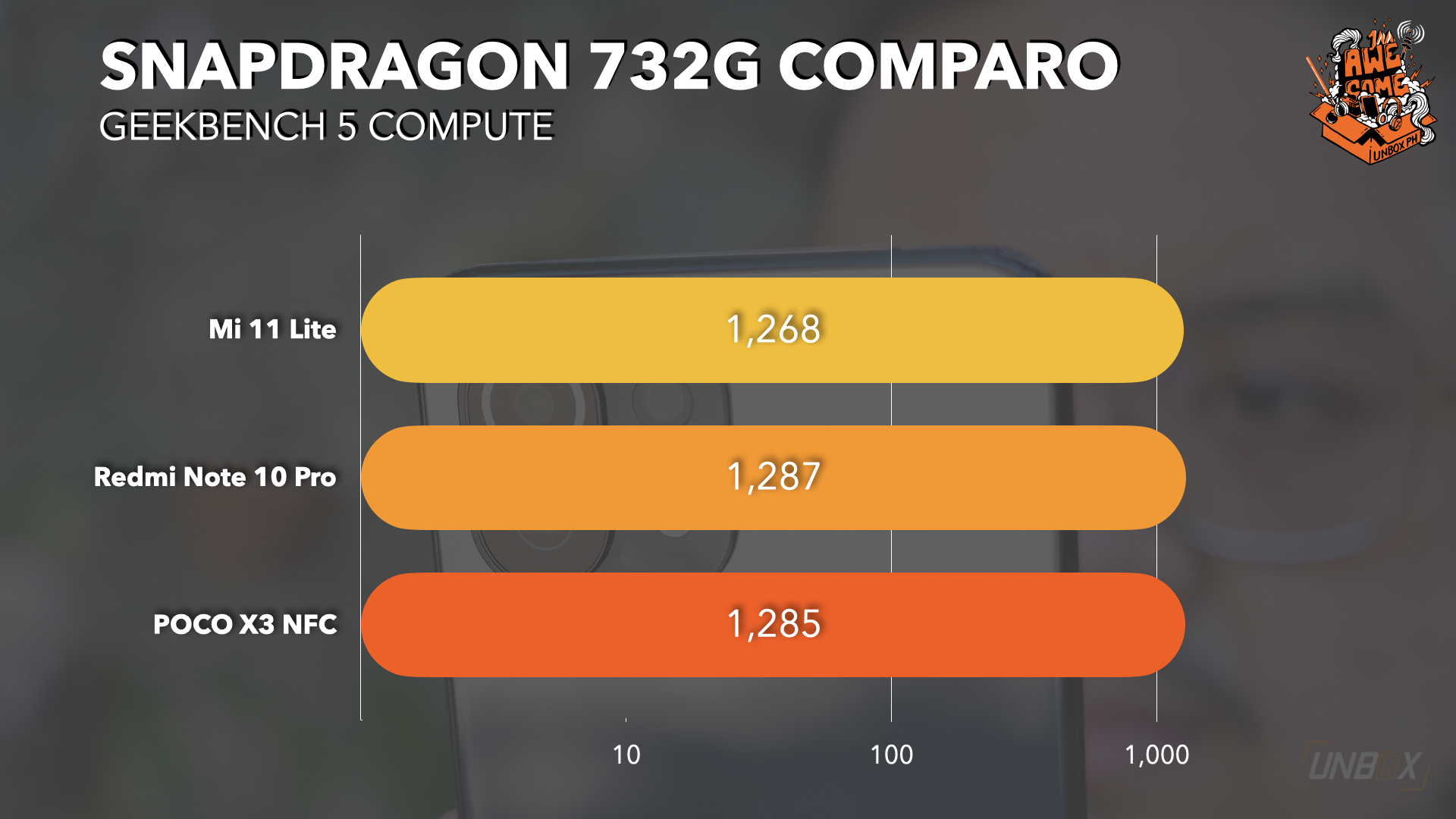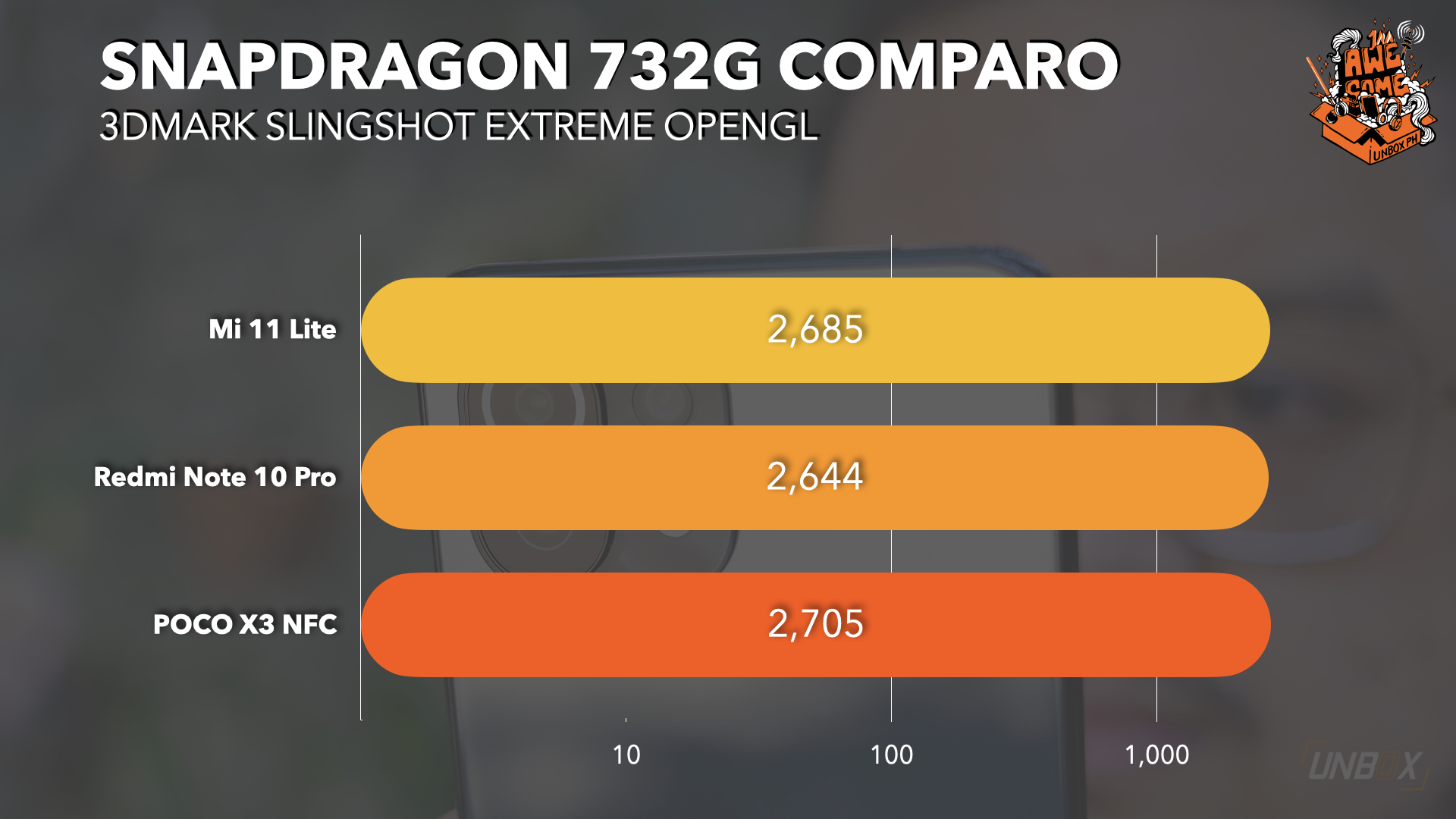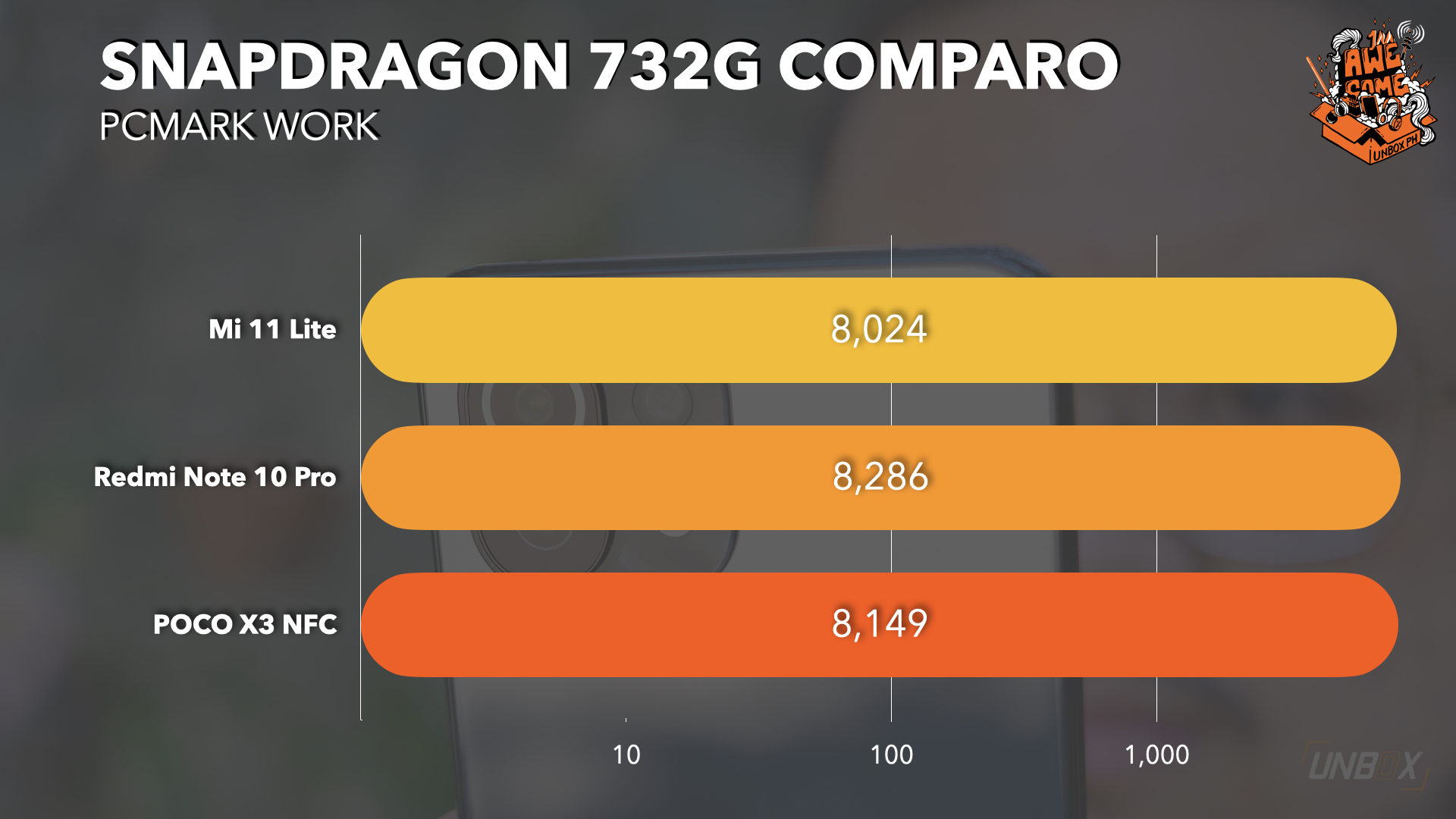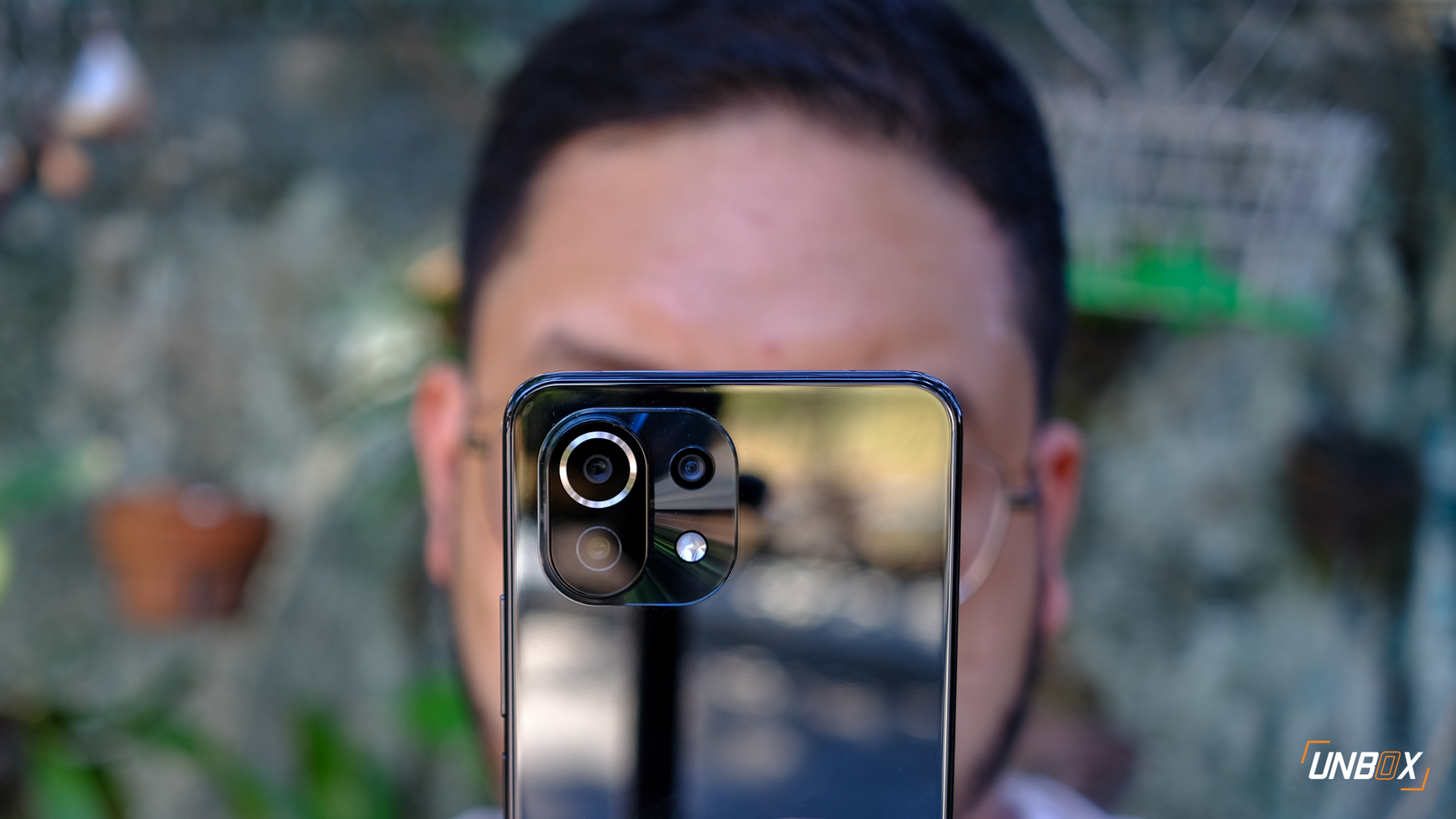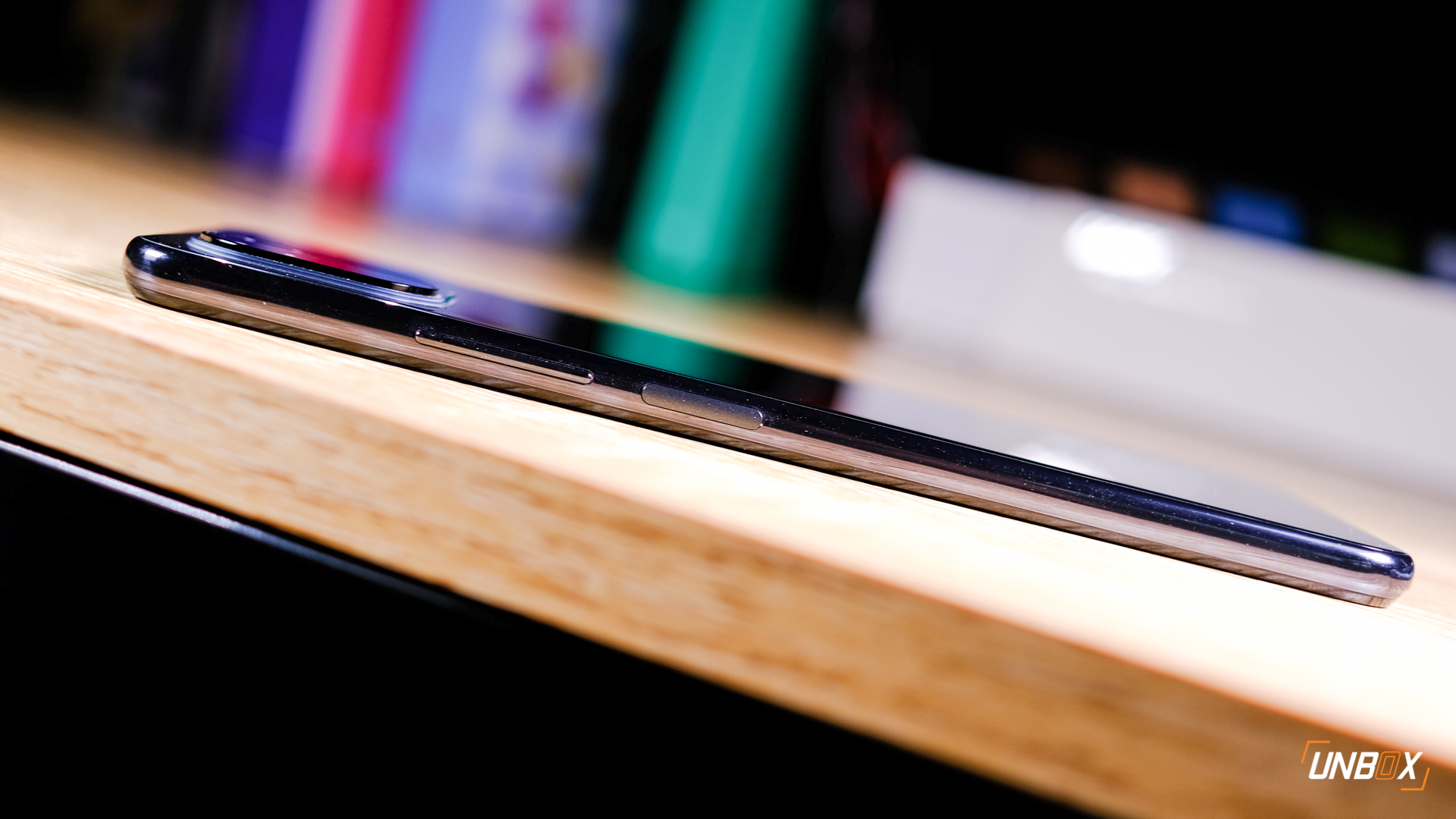Review Verdict: While the Redmi Note 10 Pro looks like a better deal, there’s still a lot to like about the Xiaomi Mi 11 Lite in the Philippines despite the similarities it has with its more affordable sibling in terms of features. The Mi 11 Lite is meant for people who want a light and skinny no-compromise phone.
Xiaomi Mi 11 Lite Review Philippines Specs:
- Snapdragon 732G processor
- 8GB LPDDR4x RAM
- 128GB UFS 2.2 storage
- 6.55-inch Full HD+ AMOLED display, 90hz refresh rate, 10-bit color
- 64-megapixel f/1.79 main camera with PDAF, 5-megapixel f/2.4 telemacro camera with AF, 8-megapixel f/2.2 ultra-wide-angle camera
- 16-megapixel selfie camera
- 4G, LTE
- WiFi, Bluetooth 5.1, side-mounted fingerprint scanner
- 4250mAh battery
- 33w fast charging
- Android 11, MIUI 12.5
Pros
- Very thin and light
- Great-sounding speakers
- 10-bit support gives a broader color range
Cons
- Glass protection is not Gorilla Glass
- Faces competition against Redmi Note 10 Pro (in some features)
Design
The Mi 11 Lite goes for a more boxy body that is reminiscent of Apple’s current design language for the iPhone 12 series in a likely effort to differentiate itself against the brand’s other mid-range phones like the Redmi Note 10 Pro and POCO X3 NFC. The Mi 11 Lite is almost impossibly thin at just 6.8mm and is incredibly anorexic at just 157g. It is so light, it even beats the weight of the OnePlus Nord—my current daily driver—by almost 30 grams.
Xiaomi might have made the Mi 11 Lite incredibly thin and light but that doesn’t mean they skimped out on features. Despite the phone’s impressive dimensions, you still get stereo speakers, a respectable 4250mAh battery, and a triple rear camera setup. The phone shares the same module design as the vanilla Mi 11, meaning you still get that large square bump with a rectangular inner bump for the main camera and ultra-wide-angle camera.
The camera bump, as big as it is, doesn’t add that much of a bulge on the Mi 11 Lite’s svelte frame, though we recommend using the included case to help the phone lay flat when you place in camera-down on a surface. Another reason to use the included case is the fact that its back panel—which is made from shatter-resistant glass—attracts fingerprints like crazy.
The Mi 11 Lite also uses a hybrid SIM tray, which lets you choose between two SIMs or a single SIM and a microSD card. That’s a nice touch for the Mi 11 Lite, considering it is marketed as an “affordable” premium offering from Xiaomi.
Display and Speakers
Like what we pointed out in our quick review, it is unfair to say that the Mi 11 Lite’s 6.55-inch AMOLED panel is inferior to the Redmi Note 10 Pro just because it has a lower 90hz refresh rate. The Mi 11 Lite’s main advantage is its support for 10-bit color, which translates to a wider color range, which we’d gladly take over a slightly faster refresh rate.
After using the Mi 11 Lite for watching a few HDR videos on YouTube, I’ve noticed that its color range is wider compared to the usual AMOLED panels used in its price range. However, there’s a slight caveat: you need to stick to the Original Color scheme to enjoy the accurate (and broad) color range since this setting takes care of the proper color calibration for you.
Mid-range phones nowadays are incorporating stereo speakers as the main feature, and the Mi 11 Lite has a better set of speakers compared to other mid-range phones I’ve tested so far.
Aside from having a fuller sound, the Mi 11 Lite’s speakers maintain their audio fidelity even if you pump up the volume at 100%. As of this writing, only Samsung’s Galaxy A72 and A52 can match the Mi 11 Lite’s speakers—though you will be paying more for the Korean brand’s mid-range offerings.
Cameras
Another aspect where the Mi 11 Lite and Redmi Note 10 Pro debate continues is with the cameras. On the Mi 11 Lite, you only get a triple rear camera setup: 64-megapixel ISOCELL GW3 main camera, 8-megapixel ultra-wide-angle camera, and 5-megapixel telemacro camera that has autofocus.
As someone who used the Redmi Note 9 Pro before, the Mi 11 Lite has better post-processing. Dynamic range is better for both the main camera and ultra-wide-angle camera, and colors are more subtle.
Aside from better post-processing, the improvement in camera performance is more noticeable with the ultra-wide-angle camera. Most mid-range Xiaomi phones (POCO and Redmi included) struggle delivering decent performance for their ultra-wide-angle cameras. The Mi 11 Lite is an exception—Xiaomi has figured how to optimize the ultra-wide-angle camera and the photos it produces while using the same 8-megapixel snapper.
The improved post-processing algorithm also applies to the 16-megapixel selfie snapper as well.
In addition to video features like VLOG, movie effects, and Dual Video, the Mi 11 Lite’s 4K video recording is relatively stable—proof that the main rear camera’s EIS is working very well. If you want rock-steady footage, you can use Steady Video, which caps shooting at 1080p30 and adds a small crop for smoother video footage.
Internals and Battery Life
Like the Redmi Note 10 Pro and POCO X3 NFC, you get a Snapdragon 732G processor inside the Mi 11 Lite. In fact, it is very similar to the Redmi Note 10 Pro as the Mi 11 Lite also has 8GB LPDDR4X RAM and 128GB UFS 2.2 storage.
As we have mentioned in our full review of the Redmi Note 10 Pro, the Snapdragon 732G is essentially a higher-clocked version of the popular Snapdragon 720G, so overall performance is roughly the same—if not slightly higher in some benchmarks. Compared to the Redmi Note 10 Pro and POCO X3 NFC, the numbers are roughly the same as well.
That being said, the Snapdragon 732G has roughly the same gaming performance as the Snapdragon 720G. I have been playing Genshin Impact on the Mi 11 Lite at medium settings (aka the best possible settings before the game warns me of overworking the processor), and overall gameplay is decent and stable. However, I noticed the phone becoming warm after over an hour of gameplay—though it does not go too hot to the point that it may burn my hands.
With our video loop test, the Mi 11 Lite lasted for 11 and a half hours, which should easily translate to at least a days’ worth of use. Considering the Mi 11 Lite has a 4250mAh battery and that the battery has to drive a 90hz display, its battery life is technically better than the Redmi Note 10 Pro.
Even if the Redmi Note 10 Pro has a bigger 5020mAh battery, the difference in battery life is roughly 30 minutes—and the Redmi Note 10 Pro’s rather underwhelming battery life is due to its 120hz display that consumes more power than the Mi 11 Lite’s 90hz panel.
Like the Redmi Note 10 Pro (and most mid-range Xiaomi phones), you get a speedy 33w wired charging solution with the Mi 11 Lite. Since you are dealing with a smaller battery, it takes less than an hour to top up the Mi 11 Lite’s battery to 100%.
Wrap Up and Conclusions
Our review of the Mi 11 Lite 4G in the Philippines shows that despite being in a rather awkward spot—with its price being close to the top-end variant of the Redmi Note 10 Pro—the most affordable Mi 11 variant has its own strengths to make it stand out from its siblings. Aside from having a skinny body and being insanely light, the Mi 11 Lite is better than the Redmi Note 10 Pro with its better display, more efficient battery life, and better overall camera performance.
That being said, the Mi 11 Lite caters to an audience that is different from the Redmi Note 10 Pro. It is a phone that is meant for those who prioritize a phone that’s thin and light while having the best possible set of features.
Xiaomi Mi 11 Lite Review Price Philippines
The Mi 11 Lite 4G is priced at Php 14,990 for the 8GB/128GB variant and is available at Mi Authorized Stores and partner retailers nationwide, along with Xiaomi Philippines’ official Lazada and Shopee stores.


